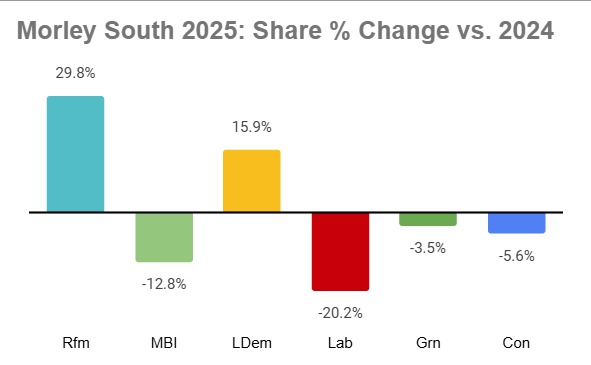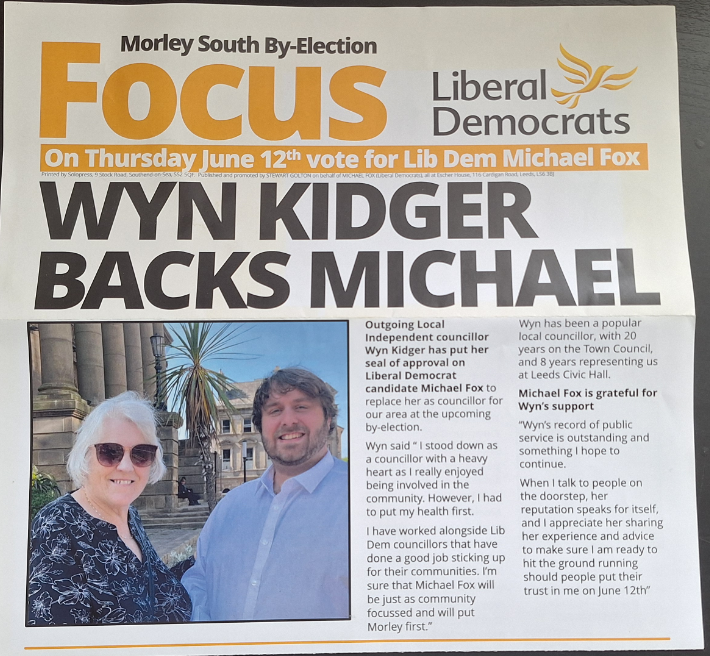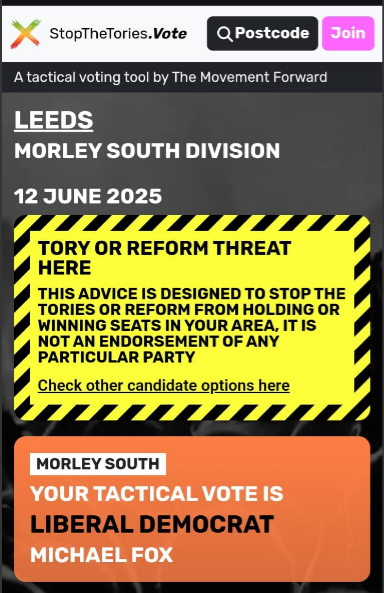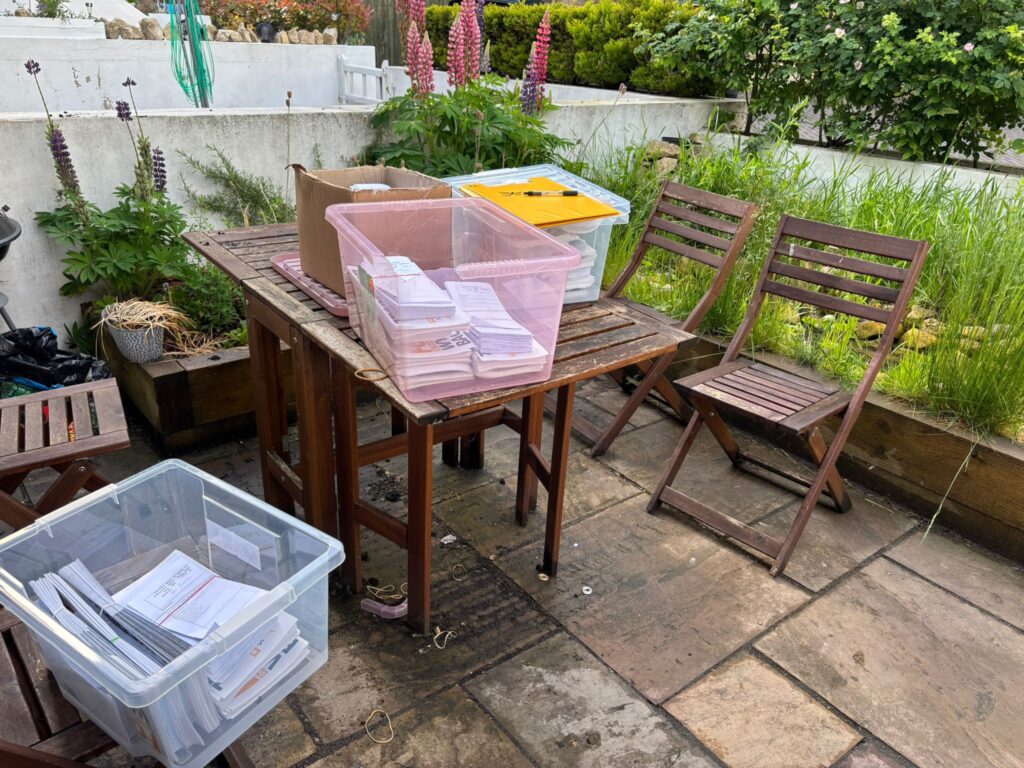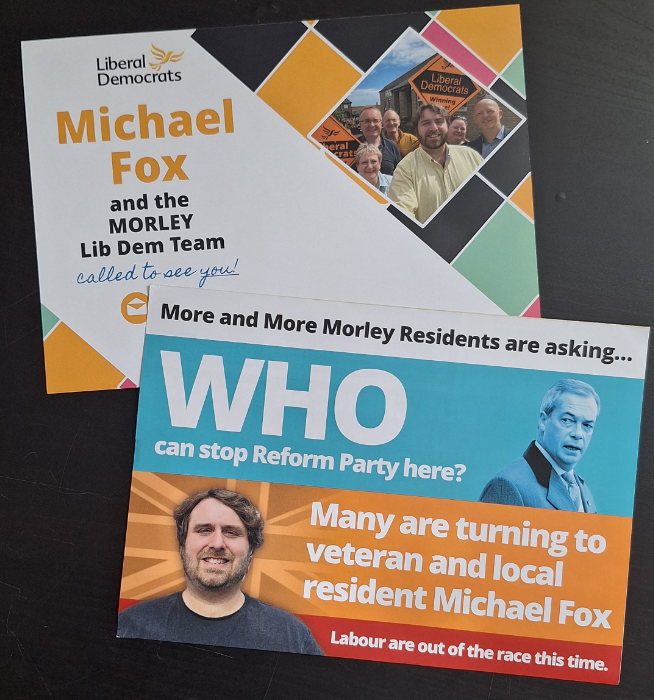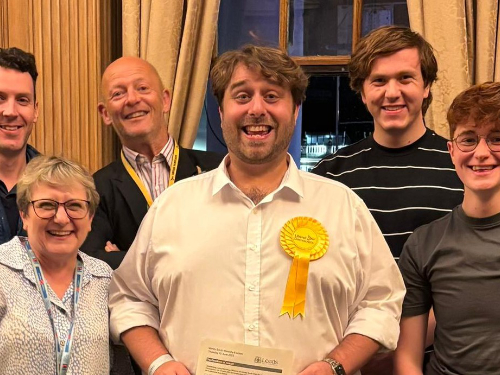
Every year, hundreds of council by-elections are called in wards or divisions where we don’t hold seats or are not on our target lists. It’s easy to ignore them, select a paper candidate, and let other parties fight it out.
That would be a huge missed opportunity.
Here are the steps you can take to make the most of fighting a by-election in a ‘black hole’, a ward with little or no recent Lib Dem campaigning. One recent example was in Morley, West Yorkshire, a suburb of Leeds, where we had finished last with under 100 votes in the previous local elections.
1. What to Do First
Once a by-election is likely, there are essential steps you can take before the notice of poll and nominations are published:
- Decide to fight – It sounds obvious, but the local party needs to agree to contest the election formally.
- Start the approval and selection process – If time is tight, executive officers can select a candidate directly.
- Speak to ALDC – Our Development Officers cover all areas in England, Scotland, and Wales, and can help even the smallest teams get started.
- Refer to the ALDC By-Election Toolkit – It covers everything from planning to polling day.
- Sort your Connect data – In most cases, the Connect database requires attention. Update or create delivery maps, upload current postal voters (available from the council), and, if applicable, upload marked registers from recent elections.
- Ask nearby local parties for help – by-elections move fast. Organise action days and get your region to help promote them.
- Apply for ALDC Fighting Fund support – We offer financial help to boost your campaign.
For the recent by-election in Morley, Leeds Lib Dems contacted ALDC right away. Within days, a local candidate was selected, a “Flying Start” leaflet was drafted, Connect was updated, and West Yorkshire members were called in to help. An application to the fighting fund was submitted immediately.
In past elections, there had typically been battles between Independents and Labour. However, with Reform rising in the polls, Labour declining, and local splits among Independents, a real opportunity emerged.
The team built a clear, focused message:
- A strong local candidate
- Lib Dems best placed to beat Reform
- Labour and Conservatives are unpopular; Independents are in disarray.
- Every by-election is different. Morley’s message may not be a good fit for your campaign, but taking early action always gives you a better chance.
2. Starting from Behind Doesn’t Mean Staying Behind
In a short campaign with limited infrastructure and data, building credibility quickly is essential. Here are key tactics that work:
- Poster campaigns – Show visibility fast. Use lampposts or public spaces if allowed, and prioritise high-traffic areas. If relying on gardens, canvass specifically for poster sites.
- High-street stalls and high-visibility events – Join community activities, get photos, and post short videos on social media for more engagement.
- Stay competitive on leaflets – Outside help can make the difference. Have a location where volunteers can collect leaflets at any time, and run regular delivery sessions and action days.
- Remote volunteering – Can neighbouring local parties write your blue inks or help with admin, freeing your team to focus on doorsteps?
- Endorsements and proof points – Feature local figures backing your candidate. Independent validation from the press or tactical voting sites builds credibility, especially if you placed low last time.
Examples from Morley:
3. Message and Squeeze
Please keep your message simple, clear, and consistent, and repeat it constantly. For example, if your message is that your opponent is out of touch, say it on every issue: Service cuts? They didn’t listen. Anti-social behaviour? They ignore it. Crumbling buildings? They don’t care.
If we’re challengers, we should say it every time. If you’re unsure who the primary opponent is, seek advice early to avoid changing messages midway through the campaign. ALDC is here to help with this advice.
Squeezing votes is easier when you were second last time, but it’s still possible from last place. Have specific squeeze leaflets with you when canvassing to give to 3rd, 4th or 5th party supporters, direct them to tactical voting sites that support us and ask them if they would consider lending us their support (these questions help us to build a polling day list that will maximise our vote)
4. Winning Isn’t Always Taking the Seat
Of course, we all want to win. But going from last to first can be a big leap. Define what “winning” looks like for your capacity. Identifying a future candidate or moving a ward from a black hole to development or target status are all valuable outcomes.
It may be the first election your members have ever fought, so treat it as proper training or a chance to test new techniques. That, too, is a win.
For Leeds and Morley, they went from last to 3rd. They went from winning less than 100 votes to over 1000, beating Labour, the Conservatives, and the Greens too. The local party has established a strong foundation for the 2026 elections, has a well-known candidate, and the entire team has gathered valuable information that will guide their planning for city-wide polls in the year ahead.
